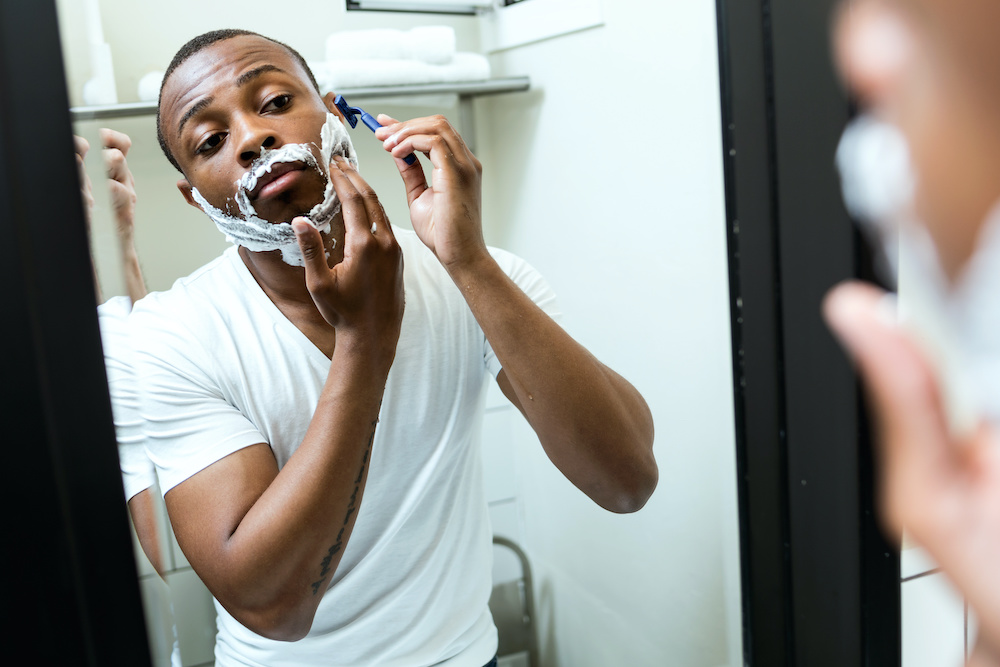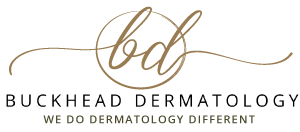How to Prevent and Treat Razor Bumps Safely

While you may like the look and feel of a shaved beard or smooth legs, regularly shaved skin can be susceptible to razor bumps. Men, and black men in particular, are prone to developing razor bumps on their faces, necks and chests. Women can also develop these bumps on their legs, armpits or bikini lines.
Pseudofolliculitis barbae, the medical term for what we refer to as razor bumps, can actually occur from a variety of hair removal processes, including shaving, waxing, plucking or chemical treatments. Razor bumps can look like raised bumps that are skin-colored or slightly pink or red. Sometimes, these bumps can develop white heads if they become infected.
What Causes Razor Bumps?
Black men and people with very curly hair are most prone to developing razor bumps. Curly hair has the tendency to grow back into the skin or grow sideways. This causes an inflammatory reaction that can result in bumps, rashes and pustules. Infected razor bumps can be unsightly, but they can also be uncomfortable and even painful. In addition to treatment, those who are most susceptible to razor bumps should learn effective methods for preventing them in the first place.
How to Prevent Razor Bumps
If you commonly develop razor bumps, consider the following tips for each stage of the shaving process. Remember, like most skin care regimens, consistency is key to success. Following the suggestions below each and every time you shave can help you avoid developing unwanted bumps and make treating the ones that do pop up much easier.
Before shaving:
Cleanse and exfoliate. It is important to begin with a clean and prepped surface. With a soft washcloth or a toothbrush and a gentle cleanser, clean and exfoliate the area you will be shaving. This motion will gently release hairs that have become embedded in the skin and lift hair for easier shaving. This process also helps to unclog pores and give hair follicles a clear path for growth, reducing the likelihood of developing an ingrown hair.
Open pores. Before shaving, you should also make sure that your pores are open. It is recommended that you shave after a shower or after applying warm compresses to the face, neck or other targeted area. Open pores and moisturized hair will result in an easier shave.
During shaving:
Apply shaving cream or gel. Never shave sensitive areas without a moisture barrier in place. Shaving gels and creams keep the hair moisturized, reduce friction and prolong the life of your razor blade. Choose a gentle cream or gel like an oatmeal based product that is specifically formulated for sensitive skin. Creating a smooth surface for your razor will result in fewer snags and bumps.
Use a sharp razor. Never shave any surface of your skin with a dull, rusted or dirty razor. A sharp blade will require less pressure. Too much pressure can change the surface of your skin and result in nicks and snags.
After shaving:
Hydrate and disinfect. Your skin is very sensitive right after the hair removal process. It is critical that you keep your skin hydrated and clean if you want to avoid developing razor bumps. Choose an alcohol-free product which can irritate and dry out the skin. Instead, look for nourishing products that contain witch hazel or aloe.
How to Treat Razor Bumps
If you already have razor bumps, resist the urge to remove the ingrown hair on your own. Picking at a razor bump can lead to further infection. In addition to giving the bumps time to heal on their own, you should discontinue shaving the area and avoid wearing tight clothing, sports equipment or other items that could irritate the impacted skin.
For persistent razor bumps, you might need to seek the help of a board-certified dermatologist. Your dermatologist can evaluate your skin and help you develop an effective plan for preventing and treating razor bumps. If more advanced measures are required, such as laser treatments, your dermatologist will work with you to decide the best course of action to get the results that you want.
If you live in the Atlanta area and are experiencing persistent razor bumps, call Buckhead Dermatology today. With two convenient offices razor in Atlanta and College Park, you can easily schedule an appointment with Dr. Straughn and quickly get on the path to the clear skin you want.
